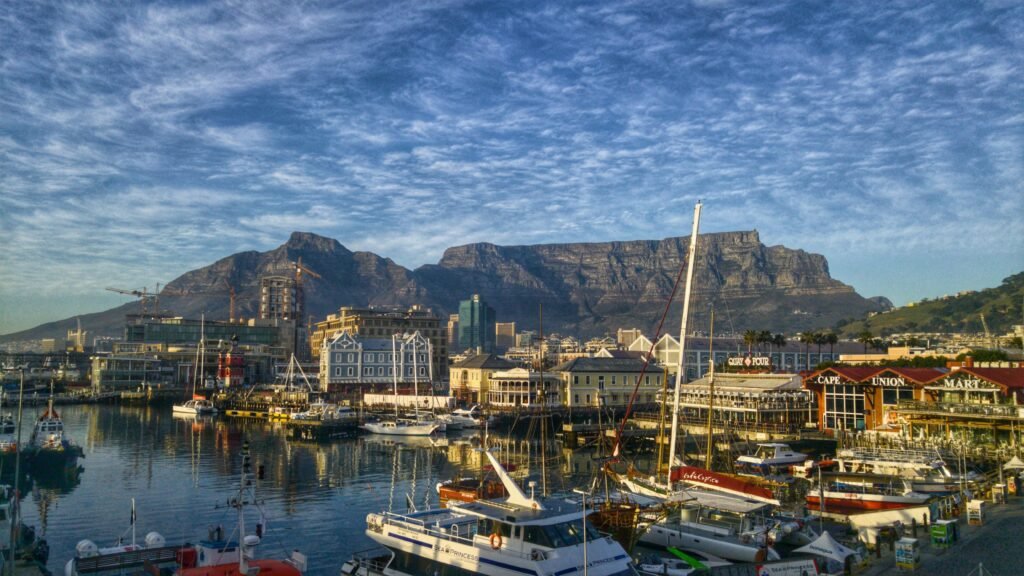
Lalibela: Carved straight from volcanic tufa and sunken into the earth like secret chapels, the rock-hewn churches of Lalibela rearrange your sense of what’s possible. Here, you don’t climb up to a sanctuary, you step down into one. For families, couples and solo travellers seeking a rare blend of living faith, ingenious architecture and big-sky highland scenery, few places leave a deeper imprint.
Before you book: The situation in northern Ethiopia is fluid. Always check the latest UK Foreign, Commonwealth & Development Office (FCDO) advice and your insurer’s policy before making plans. (More on this in “Planning from the UK”.)
Why Lalibela belongs on your lifetime list
There are world-class sites that feel like open-air museums. Lalibela is not one of them. Worship here is continuous and intimate chants rolling through cool passageways, priests blessing visitors with centuries-old crosses, and locals wrapped in white cotton netela at dawn services. You’ll explore a honeycomb of trenches and tunnels connecting eleven medieval churches, each chiselled out of bedrock and finished with windows, pillars and reliefs – all from a single piece of stone.
For photographers, the geometry is irresistible: cruciform roofs, knife-sharp shadows, priests in shafts of light. For history lovers, the complex evokes the birth of an African Christian civilisation that interacted with Aksum, the Red Sea and the wider world. For families, the setting feels safe and self-contained when conditions allow, with short, high-impact walks and plenty of wide-eyed moments. And for solo travellers, the conversations with guides, clergy and pilgrims are the trip.
A short history of a “New Jerusalem”
Most accounts date the churches to the late 12th–early 13th centuries under King Gebre Meskel Lalibela of the Zagwe dynasty, who, tradition holds, envisioned a “New Jerusalem” after Muslim forces captured the Holy City. Whether that story is legend or layered with older phases, the upshot is extraordinary: eleven sanctuaries, some monolithic, some carved into cliff faces, connected by trenches, caves and symbolic names tied to the Holy Land.
UNESCO added the Rock-Hewn Churches of Lalibela to the World Heritage list in 1978. The site remains a place of active pilgrimage and an anchor of Ethiopian Orthodox identity. Conservation is a slow, multi-partner effort: the churches were long protected by temporary shelters; newer initiatives aim to stabilise fragile surfaces and ease drainage without dulling the drama.
Quick facts & figures
- What they are: A cluster of 11 medieval churches carved from living rock, unified by trenches and tunnels.
- Altitude & climate: Lalibela sits around 2,500–2,600m; days are often sunny with strong UV, nights are cool.
- The three groups:
- Northern (including Bete Medhane Alem and Bete Maryam)
- Western (the star: Bete Giyorgis, St George)
- Eastern (including Bete Amanuel and Bete Gabriel–Rufael)
- Symbolism: Names and layout reference the Holy Land and a sacred river; processional routes still shape worship.
- UNESCO status: Inscribed in 1978 for outstanding universal value in architecture, engineering and living tradition.
The lay of the land: what to see, church by church
The headline act: Bete Giyorgis (St George)
The cross-shaped jewel in Lalibela’s crown, Bete Giyorgis, is freestanding and sunk deep into bedrock, with a trench that acts as both processional route and theatrical reveal. Many travellers time their visit for late afternoon, when warm light accentuates the stone’s ochre tones.
Photography tip: Compose from the rim to capture the cruciform roof and the trench geometry. A short walk to the western viewpoints offers a broader sweep of the surrounding highlands.
The Northern Group
- Bete Medhane Alem (Saviour of the World): The largest church, with collonaded grandeur echoing earlier Aksumite forms.
- Bete Maryam (House of Mary): Often considered the oldest; look for carved bas-reliefs and a delicate pool in the courtyard.
- Bete Golgotha Mikael: Traditionally associated with royal burials; interior access can be more restricted.
The Eastern Group
- Bete Amanuel (House of Emmanuel): Intricate façades with “Aksumite” style details—look for the pattern of window frames and “beam ends” carved in stone.
- Bete Gabriel–Rufael: Linked to the complex by a narrow passage, this structure’s past function sparks debate: palace? store? sanctuary?
- Bete Abba Libanos and Bete Mercoreus: Half-freestanding, half-cliff-borne, these reveal how varied Lalibela’s techniques are.
Orientation tip: The clusters are walkable from the town centre. Expect uneven ground, narrow steps and low tunnels; a torch and grippy footwear make a big difference.
Beyond the core: day trips and highland panoramas
Yemrehanna Kristos (half-day to day trip)
A striped stone-and-timber church tucked inside a cave about 40–45km from town, Yemrehanna Kristos predates (or at least differs from) the Lalibela carving style. The drive winds through highland farms; a short, breath-stealing final climb delivers you into a cavern with an exquisite wooden ceiling and a haunting side chamber of ancient human remains. Road conditions change: ask locally about drive times and 4×4 availability.
Asheton Maryam monastery (half-day hike or 4×4 + hike)
Perched above Lalibela at over 3,000m on the Abuna Yosef massif, Asheton Maryam rewards with airy views, cave chapels and a sense of the region’s monastic tradition. Fit families with older children and patient pace-setters will enjoy it; altitude makes the same trail a romantic adventure for couples who like to walk together.
Abuna Yosef trekking (1–3 days when feasible)
For serious hikers, the 4,260m Abuna Yosef range offers afro-alpine meadows, giant lobelias and the chance (with luck) to glimpse endemic gelada baboons and Ethiopian wolves. Community-run trekking routes and rustic lodges/guesthouses can be arranged via local operators. If you’re short on time, consider a night at Hudad Lodge on a 3,300m plateau outside town for stellar sunsets and stargazing.
Planning from the UK: visas, flights, timing & safety
Visas: UK nationals typically apply online for a tourist e-visa before travel; requirements can change (passport validity, photo and processing time). Use the official Ethiopian e-Visa site and avoid third-party imitators.
Flights: Ethiopian Airlines operates non-stop services between London Heathrow and Addis Ababa. From Addis, domestic hops run to Lalibela (LLI) when operations permit; otherwise, routes via Gondar or Mekele with onward road transfers are sometimes used by tour operators when security allows.
Safety & insurance: This is the high-stakes part. As of publication, the FCDO advises against travel to parts of northern Ethiopia, including the Amhara Region, where Lalibela sits. Advice evolves; some operators pause or pivot itineraries. If you choose to travel when official advice is against it, standard travel insurance may be invalidated. Build flexibility into your plan and monitor advisories right up to departure.
Best time to go: The dry season (roughly October–March) brings clearer skies and easier walking. January is festival season (see below) and the most atmospheric, also the busiest. Rains tend to fall from June–September, turning fields green and trails muddy.
Altitude & health: At ~2,500m, take day one gently, sip water and limit alcohol. Families should plan low-effort first afternoons; solo hikers can save big ascents for day two. Bring sun protection and layers – nights get chilly.
Practicalities: on the ground in Lalibela
Guides & tickets: You’ll buy a site pass covering all eleven core churches, valid over multiple days. A licensed local guide is strongly recommended: routes can be maze-like, and context transforms what you’re seeing. Guides can also coordinate festival access, museum stops and out-of-town trips.
Opening rhythm: Expect morning and afternoon visiting windows, with a midday break for services and rest. Sundays and festival days focus on worship; some interiors may be closed to non-worshippers at peak moments.
Dress & etiquette: Shoulders and knees covered is the norm; women often cover hair (a light scarf is perfect). Remove shoes before entering churches; easy slip-offs help, and ask before photographing people. The interiors of certain sanctuaries may restrict photography entirely; outside, be discreet during services.
Money & connectivity: ATMs can be unreliable; bring cash as a backup. Mobile data works in town but can be patchy on excursions. Power cuts happen; carry a power bank.
Accessibility: The site involves steps, narrow rock passages and uneven surfaces. Some vantage points are reachable with care, but full access is limited. Families with toddlers should use carriers rather than pushchairs. If mobility is a concern, consider focusing on the easier approaches to Bete Giyorgis and selected viewpoints and let a guide tailor the route.
Suggested itineraries
Itinerary 1: One perfect day inside Lalibela (families, couples, solo)
08:00 – Northern Group (2.5–3 hours)
Start early to enjoy Bete Medhane Alem and Bete Maryam before it’s busy. The courtyards are great for kids to burn energy between interiors.
11:30 – Break for lunch in town (1–1.5 hours)
Choose a café with a view; parents can refuel while the kids try fresh juices and injera with mild stews.
13:30 – Eastern Group (2 hours)
Explore Bete Amanuel and Bete Gabriel–Rufael’s passages. Claustrophobic? Let your guide reroute around the tightest tunnels.
16:00 – Bete Giyorgis for golden hour (60–90 minutes)
Walk the rim viewpoints, then descend to the trench for close-ups as the light softens.
Evening
Dinner with a coffee ceremony. Families: early night. Couples: ask your guesthouse to set up a terrace table; solo travellers: join a small group for a storytelling walk.
Itinerary 2: Three days around Lalibela (adds a day trip and a hike)
Day 1 – The core churches
As per the one-day plan, but slower: add the small site museum and a stop in Bete Golgotha Mikael if open.
Day 2 – Yemrehanna Kristos (+ market if it’s Saturday)
Leave after breakfast; stop for wide-angle views on the drive. Back by mid-afternoon for the Saturday market: herbal remedies, coffee beans, baskets, a livestock corner—a brilliant slice of local life.
Day 3 – Asheton Maryam (hike + monastery)
Hike from town if you like the challenge, or drive partway and walk the final ascent. Pack layers; the wind can bite.
For families: Switch Day 2 and Day 3 if little legs prefer the short hike first.
For couples: Book a sunset table on return – Lalibela’s highland light is romance in slow motion.
For solo travellers: Ask your guide to set up a shared table one evening – Lalibela attracts fascinating people.
Itinerary 3: A northern highlands loop (5–7 days, when feasible)
When conditions allow and reputable operators are running, combine Lalibela with Gondar (castle compound and bath of Fasilides), Simien Mountains (trekking among gelada cliffs), and Lake Tana (monastery islands near Bahir Dar). Start and end in Addis Ababa for the National Museum, traditional music houses and the Merkato. If security restricts travel in Amhara, pivot to an Addis + Rift Valley route (Ziway, Langano, Bale Mountains) and pencil Lalibela for a future year.
Where to eat & drink
Ben Abeba – An architectural one-off spiralling above the escarpment, beloved for sunset dinners and a menu spanning Ethiopian staples and western comfort food. The view is the headline act; wrap up warm on the terrace.
Seven Olives – A Lalibela classic with a leafy garden and reliable Ethiopian dishes; an easy pick for families and groups.
Sora Lodge Restaurant – East-facing terrace for sunrise breakfasts; hearty Ethiopian fasting platters (vegan), plus a few German-accented comfort dishes.
Cafés & coffee ceremonies – Pop into a local café for macchiatos and fresh juices; ask your guide to arrange a traditional coffee ceremony, green beans roasted over coals, hand-ground, then brewed three times. It’s hospitality as ritual.
What to try: Shiro (chickpea stew) is kid-friendly, tibs (sautéed meat) is a crowd-pleaser, and beyaynetu (a colourful vegan sampler) keeps everyone happy.
Where to stay
Maribela Hotel – A long-time favourite with valley-facing balconies, warm service and a handy location for town and churches – great for first-timers and families.
Sora Lodge Lalibela – German-Ethiopian run, with spacious rooms, a good restaurant and front-row sunrise views. Couples love the verandas.
Mountain View Hotel – True to its name, with sunset terraces, a comfortable, mid-range base for exploring.
Hudad Lodge (rustic escape) – A community-run eco-lodge on a 3,300m plateau reached by hike/mule plus short drive. Basic but unforgettable; go for star-studded nights.
Mezena Lodge – For those seeking a lodge feel, set among bungalows with a focus on landscape and tranquillity.
Booking tip: In festival periods (January), reserve far ahead. Outside peak season, smaller family-run stays can sometimes arrange last-minute rooms and airport transfers.
Seasonal events & special experiences
Genna (Ethiopian Christmas, 7 January): Thousands gather through the night for candlelit services, hymns in Ge’ez and dawn processions. It’s spine-tingling and busy. If you go, plan with a seasoned local operator, build in recovery time and accept that some spaces are for worshippers only.
Timkat (Epiphany, 19 January): A three-day celebration of Christ’s baptism; processions, drums and sacred replicas (tabots) carried beneath bright umbrellas. Accommodation sells out well in advance.
Saturday market: A weekly spectacle of colour, barter and conversation, spices, livestock, baskets and chatter. Pack small notes, shop respectfully, and ask before taking portraits.
Sunrise vigils & Sunday services: Even outside festivals, dawn brings pilgrims in white. Join quietly at the back; your guide will advise where non-Orthodox visitors may stand.
Family, couples & solo: tips tailored to you
Families
- Pick a centrally located hotel to minimise transfer faff.
- Break church time into 60–90-minute chunks with juice stops.
- Pack easy slip-on shoes for everyone and a light scarf for heads/shoulders.
- Choose one “wow” moment (Bete Giyorgis at golden hour) and build the day around it.
Couples
- Time a terrace dinner for sunset and the first stars.
- Ask your guide for quiet corners – there are recesses where the only sound is wind and distant chanting.
- Add a gentle hike to Asheton Maryam or an overnight at Hudad Lodge for shared “we did this” memories.
Solo travellers
- Hire a recommended local guide, context, access and safety all improve.
- Join a small group for Yemenrehanna Kristos or Abuna Yosef to split costs and company.
- Leave room in your schedule to say “yes” to unscripted moments – markets, coffee ceremonies, rooftop chats.
Wider UK tie-ins: make Lalibela a gateway, not a full stop
Even if the timing isn’t right for northern Ethiopia today, Lalibela can still reshape how you travel the UK and beyond.
- Faith & stone: Pair Lalibela’s living tradition with the UK’s sacred heavyweights – Durham Cathedral and Canterbury for Norman/Gothic mastery; Iona Abbey and Lindisfarne for island spirituality.
- Pilgrimage routes: Try St Cuthbert’s Way (Scotland & Northumberland) or sections of the Pilgrims’ Way to Canterbury to feel ritual landscapes underfoot.
- Ethiopia at home: Experience a coffee ceremony or platter of beyaynetu at Ethiopian restaurants in London, Manchester or Edinburgh; it enriches the story when you eventually go.
- UNESCO mindset: Let Lalibela spark a theme-based wish-list, UNESCO sites with living traditions from Skellig Michael (Ireland) to Mont-Saint-Michel (France), or closer to home, Blenheim Palace and Giant’s Causeway.
Responsible travel & cultural care
- Go with humility: These are sacred spaces first. If an area is for worshippers only, your best photo is the one you don’t take.
- Dress thoughtfully: Cover shoulders and knees; carry a scarf; remove shoes before interiors.
- Support local: Hire licensed guides, buy crafts directly at the Saturday market, and tip fairly.
- Think seasonally: Festival crowds strain resources; travel in shoulder months if you prefer quieter visits.
- Be flexible: Weather, services and security can shift; build in buffers and stay close to on-the-ground advice.
Final thoughts
Lalibela doesn’t just impress; it recalibrates. The audacity of carving faith into stone, the steady hum of worship, the highland light—together they get under your skin. Whether you’re choreographing a once-in-a-lifetime January trip, plotting a longer northern circuit when conditions are right, or keeping the dream warm with a UK pilgrimage weekend and an Ethiopian coffee ceremony closer to home, this is a destination worth planning well—and waiting for, if need be.
When you do go, remember: move slowly, ask gently, look closely. The wonder is already there.


